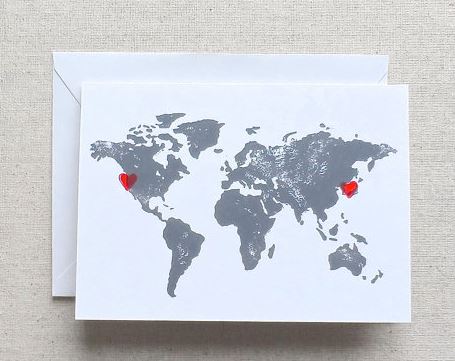Blog Archive
Long Distance Relationships of 97 Orchard Street
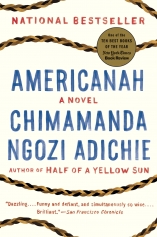 For our first Tenement Talk of the 2014 season, author Chimamanda Ngozi Adichie will come to discuss her new novel Americanah, in which Ifemelu and Obinze, a couple from Nigera with a complicated romantic past, experience unique challenges in the countries to which they immigrate – the United States and Great Britain.
For our first Tenement Talk of the 2014 season, author Chimamanda Ngozi Adichie will come to discuss her new novel Americanah, in which Ifemelu and Obinze, a couple from Nigera with a complicated romantic past, experience unique challenges in the countries to which they immigrate – the United States and Great Britain.
In our modern age of video chatting like Skype, international texting services like WhatsApp, and even smartphone apps made just for long distance couples, having a relationship, romantic or platonic, with someone who lives in another city, country, or continent is easier than ever! (Having a relationship with someone in another borough remains nearly impossible, however.)
The couples and friends of 97 Orchard Street didn’t have it quite as easy when one member immigrated to the United States, leaving the other behind. Many families at 97 Orchard Street immigrated to the US in stages – first the husband, then the wife and the children (sometimes even the children came on their own). Immigration policy often dictated that an immigrant would need someone already living in the United States to be there to greet them, or sponsor them, so the husband was sent first to get settled and become that sponsor.
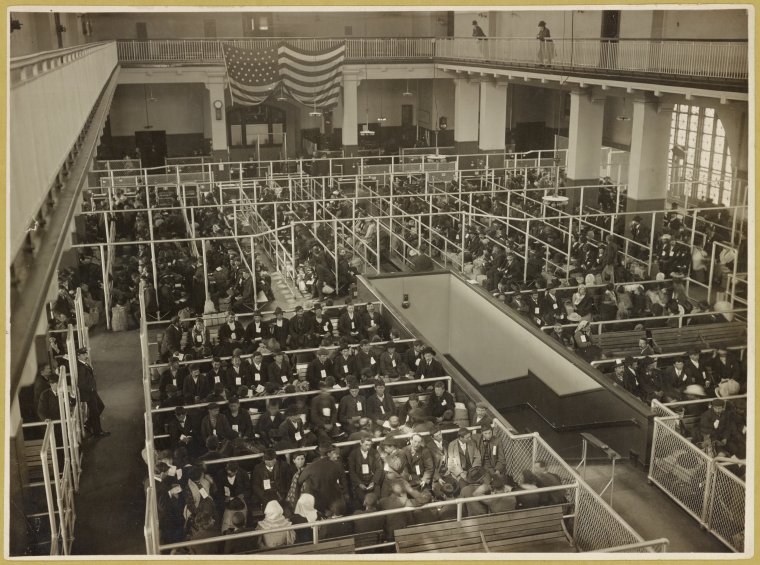
"The pens" in the Main Hall at Ellis Island. These immigrants passed their first mental examination and are waiting for more. One qualification for coming to the United States was to have someone already living here who could help you integrate. Image courtesy the New York Public Library.
However, this means that friends and lovers would be separated for years at a time.
Once the husband had arrived, he would generally rent a room to himself, or perhaps be a boarder with another immigrant family in their small tenement – in 1900, over half the households at 97 Orchard Street had at least one boarder living with them. He would save as much money as he could to send back home to his family or to save for their eventual passage to the United States. Some ‘single’ men, worried that they couldn’t properly budget their money in order to responsibly save for their family’s passage, gave their paychecks to a friend’s wife so that she could take care of the finances for him.
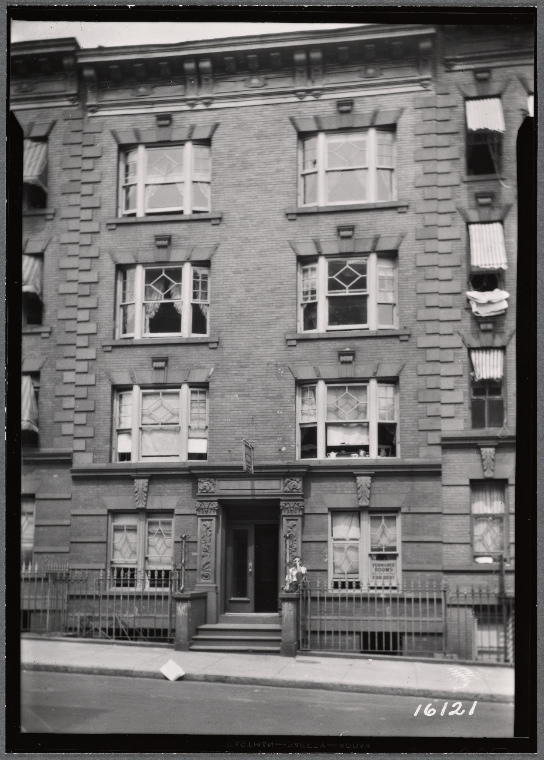
A sign, "Fully Furnished Rooms for Rent" hangs outside this small apartment building in 1936. Photo taken by an inspector from the Tenement House Department and courtesy the New York Public Library.
Often it would take the husband months, if not years, to save up enough money to send for his family. We can only imagine how lonely it must have been for both the husbands and wives as they waited for a letter that might not arrive on regular intervals. Communication wavered somewhere between sporadic and nonexistent. Transatlantic letters had to be sent on ships and could take up to a few weeks to get to Europe. In the early 1900’s, couples could send telegraphs, but they were expensive might not be available in the home country.
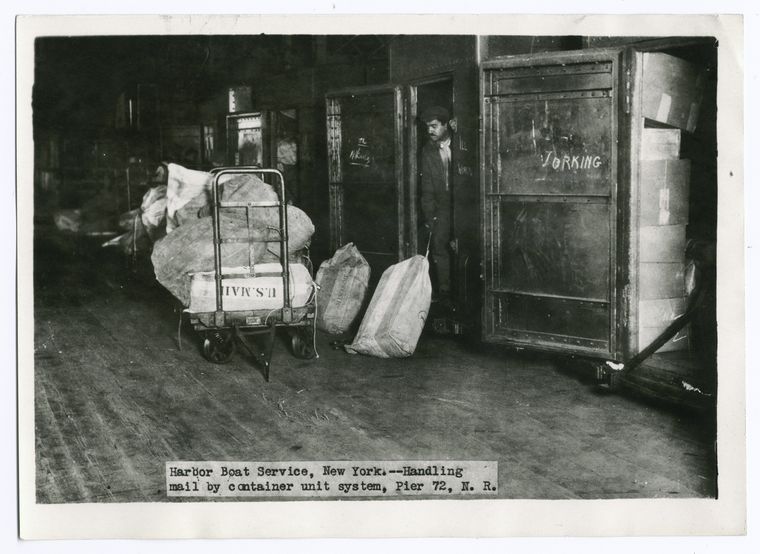
The Harbor boat service. Mail being sent by ship. Date unknown. Photo courtesy the New York Public Library.
One of the couples of 97 Orchard Street who immigrated to the US in this manner was the Baldizzi family, from Italy. According to Dave Favaloro, Director of Curatorial Affairs at the Museum, it was especially common for Italian men to come to the US before the rest of the families, and then either go back for or send for the wife and children to come to New York. Adolfo Baldizzi, a cabinetmaker, left his young wife Rosaria in Palermo and stowed away on a ship for America in 1923. He didn’t see her for a year, when he had saved enough for her voyage to the Lower East Side, where they lived for years.
For all the anguish that the distance and loneliness must have caused, we can imagine, even today in our Skype-filled world, the joy that families must have had when they finally embraced on the shores of Manhattan.
– Posted by Lib Tietjen
